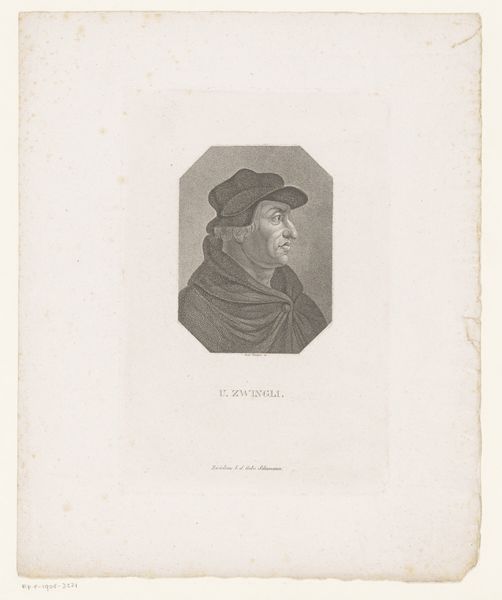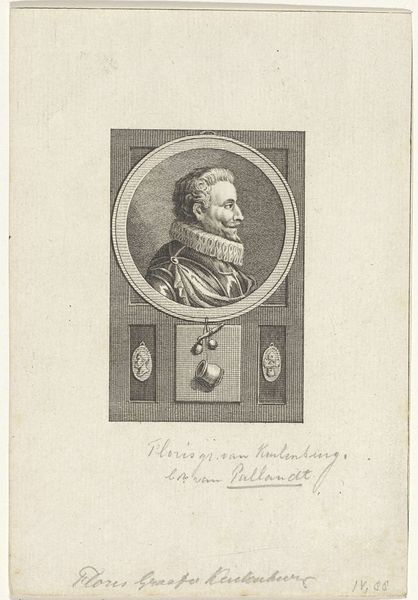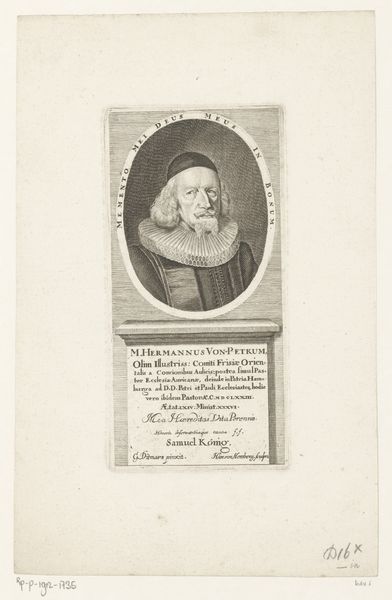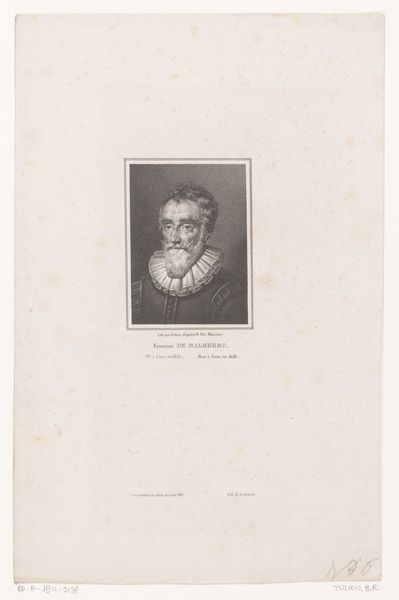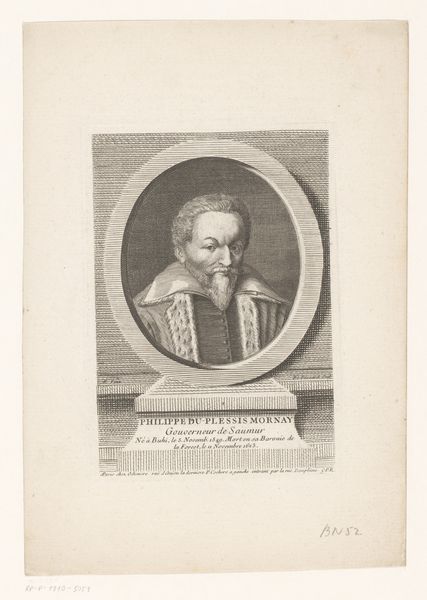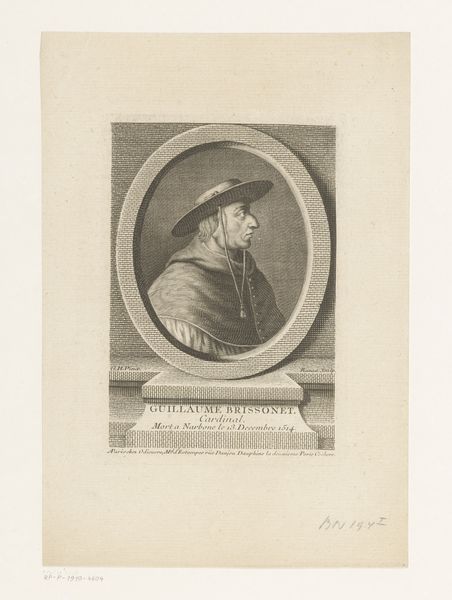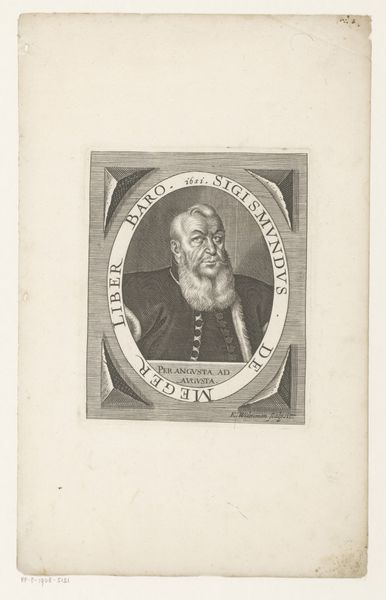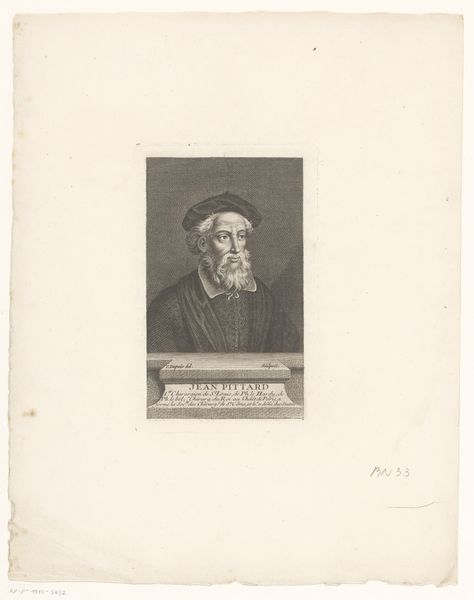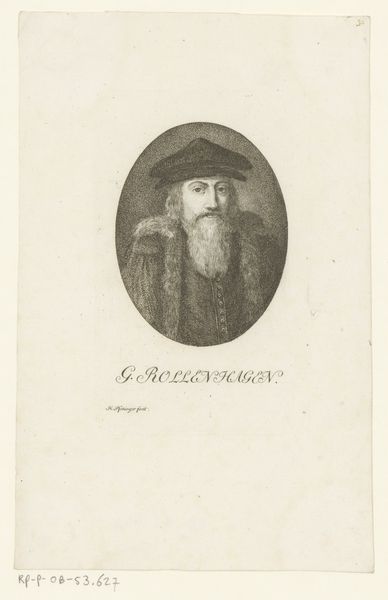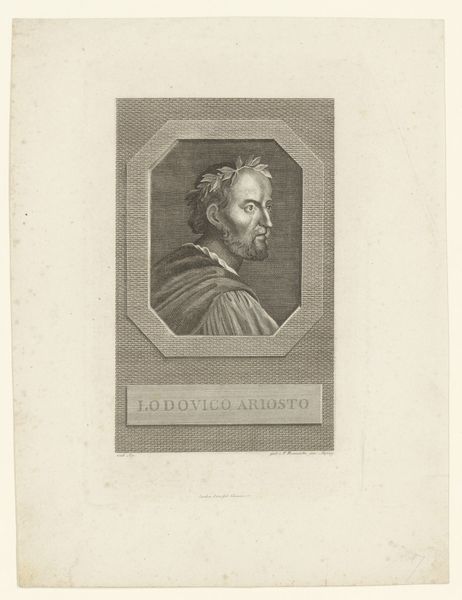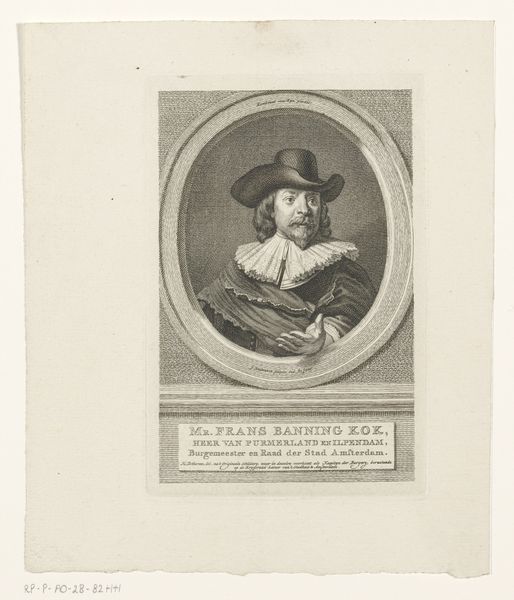
print, engraving
#
portrait
#
neoclacissism
# print
#
old engraving style
#
history-painting
#
engraving
Dimensions: height 166 mm, width 122 mm
Copyright: Rijks Museum: Open Domain
Curator: Here we see "Portret van Girolamo Fracastoro," an engraving made sometime between 1794 and 1816 by Antonio Rancati. Its Neoclassical style immediately brings to mind an ideal of rationalism and order. Editor: It feels very formal, doesn’t it? Almost severe in its restrained elegance. The use of only black and white gives it a timeless, academic feel. It’s the kind of portrait one might expect to find illustrating an important historical text. Curator: Indeed. Portraits like this, disseminated widely through printmaking, played a vital role in constructing historical narratives. This isn’t just any man; Fracastoro was a significant physician, astronomer, and poet. Consider the cultural work this image performs—asserting authority, linking intellectual prestige to a visual representation readily consumed by the public. Editor: That strong profile is quite commanding. What I find interesting is the almost exaggerated texture in the beard and fur trim – it emphasizes the individual, adding warmth where the classical style threatens to create distance. There’s a subtle tension between the ideal and the real. Curator: I agree. That tension can be tied to shifts in power and perception during the late 18th and early 19th centuries. Printmaking democratized portraiture, bringing the likenesses of important figures to a broader audience, potentially eroding the elite control over image-making. It creates both the individual's timeless essence as well as their concrete belonging to a social environment. Editor: How fascinating! The distribution of such images had the potential to impact everything from social norms to emerging political movements, solidifying collective cultural identity through repeated and affordable portraits. Curator: Precisely! So, we move from merely admiring the craftsmanship to understanding its potential to influence public perception during a period of intense social change. Editor: A testament to the powerful social and political role even a simple engraving can fulfill. Curator: It underscores the necessity of seeing art as an active participant in the larger theatre of societal expression.
Comments
No comments
Be the first to comment and join the conversation on the ultimate creative platform.
